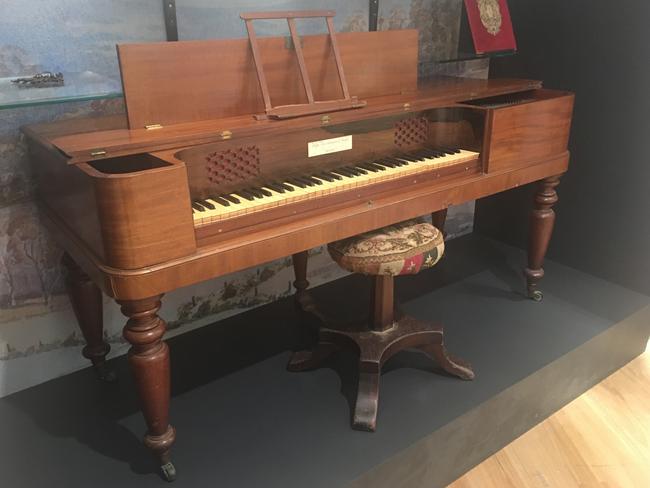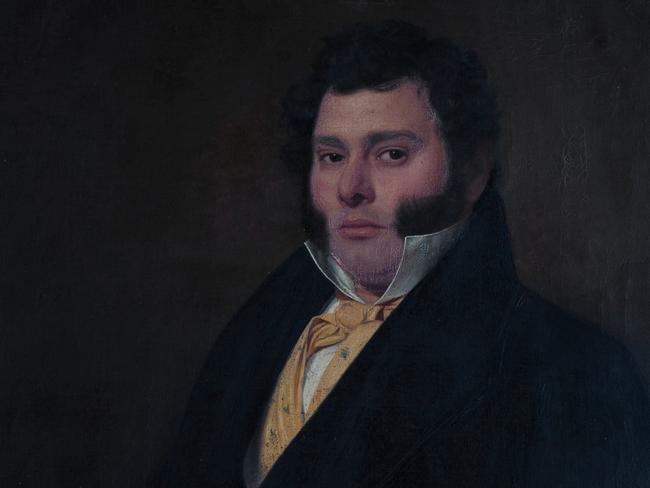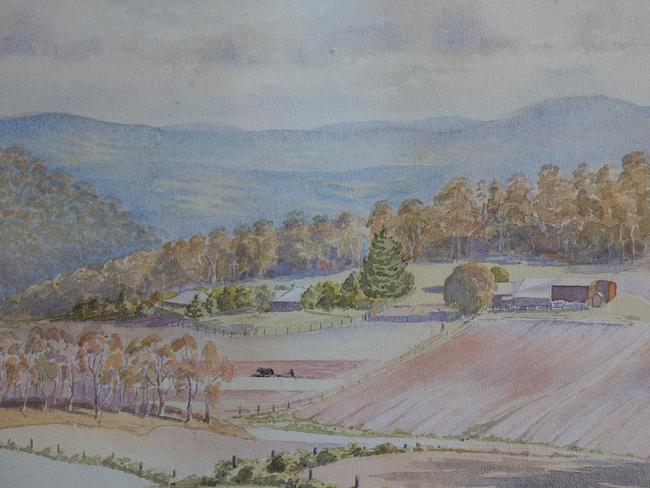Colonial piano which scaled Blue Mountains to new home now on show at Museum of Sydney
A piano brought to Sydney in 1843 is a star attraction of a new exhibition opening in Sydney this week
In 1843, when James and Wilhelmina Murray and their children left Scotland to resettle in rural NSW, the goods they brought with them from home included a mahogany piano. The piano survived the sea voyage out to Sydney, and was then loaded on to a horse-drawn cart to be hauled across the rugged Blue Mountains to its new home at Mount Lambie near Lithgow.
That same instrument goes on view at the Museum of Sydney this week in Songs of Home, an exhibition that will focus on music in the colony of NSW.
And it’s no lifeless artefact. This piano is still in the hands of the family that brought it out from Scotland, and even today it can still produce a rollicking tune, according to Museum of Sydney curator Dr Matthew Stephens who organised Songs Of Home.
“It doesn’t sound too bad,” Stephens says.

Made in 1837 by the English firm of Broadwood, the piano can be forgiven if today — more than 180 years later — it looks quite humble and worn. But back in 1843 it must have been a precious object for Murray and his large family. Otherwise such a cumbersome thing would surely have been left behind in Scotland.
For most of its long life, the piano has been the social centre of a sheep farm called Warrawang where the Murrays put down roots among other Scottish families about 22km out of Lithgow. Warrawang remained in the ownership of Murray descendants until 2004.
The piano provided the well-to-do Murrays and their cultured neighbours, such as the Maxwells, with many happy hours of simple entertainment when their day’s work was over.
The Maxwells had also immigrated to the colony from Dumfriesshire, giving the two families a natural affinity when they found themselves so far from their old home.
Members of the Murray family spent hours copying out their favourite sheet music. Those copies survive to this day and they show the Murrays treasured traditional Scottish music as well as the refined strains of composers such as the Italian Baroque master, Arcangelo Corelli.
“It’s amazing to think of them playing Corelli out in the bush in the 1830s,” Stephens says.
The Murray women played the piano, while James Murray and his son played the flute.
“It was seen as incredibly manly and athletic (to play the flute),” Stephens says.

Sounds of Home tells the story of the “vibrant musical culture within NSW during early settlement”.
Stephens, who curated the show, says it explores the first interactions between the musical cultures of the indigenous people and colonists.
“Most of what we know of the music of the early colony comes from the rare objects that have survived,” Stephens says. Volumes of sheet music bound by the owners, carefully handwritten copies of musical scores, diaries capturing a lifetime of musical habits and “an Aladdin’s cave of rare musical instruments” all help to tell the exhibition’s story.
As well as the Murray’s piano there is a cello that belonged to the wife of Governor Lachlan Macquarie, a British banjo made in the 1860s, the first bagpipes made in Australia, and historically important sheet music including some that was only discovered three years ago.
Providing a contemporary perspective on the theme, visitors to the Museum of Sydney will also be able to hear the work of five Aboriginal composers commissioned to create works inspired by the exhibition. They will also be able to see and hear the earliest transcripts of Aboriginal music.

The Murrays’ piano came to be included in the exhibition only because Stephens attended a 2017 symposium called Sound Heritage Sydney, organised by Sydney Living Museums.
At the symposium, renowned historian Professor Ian Jack told Stephens: “you should learn about Warrawang”.
The Murrays’ piano is one of those rare discoveries, Stephens says. But he certainly doesn’t discount further such finds.
“You do wonder what sits in country houses,” he says.
Today, the Murray piano is owned by Hill End farmer Kerry Cole, a direct descendant of James Murray. Hill End is the tiny former gold rush hamlet outside of Bathurst.
The piano had remained at Warrawang until 2004 when Cole’s mother passed away there.
There were many similar pianos in the colony, Stephens says. But few are likely to have had such a long and eventful life.



